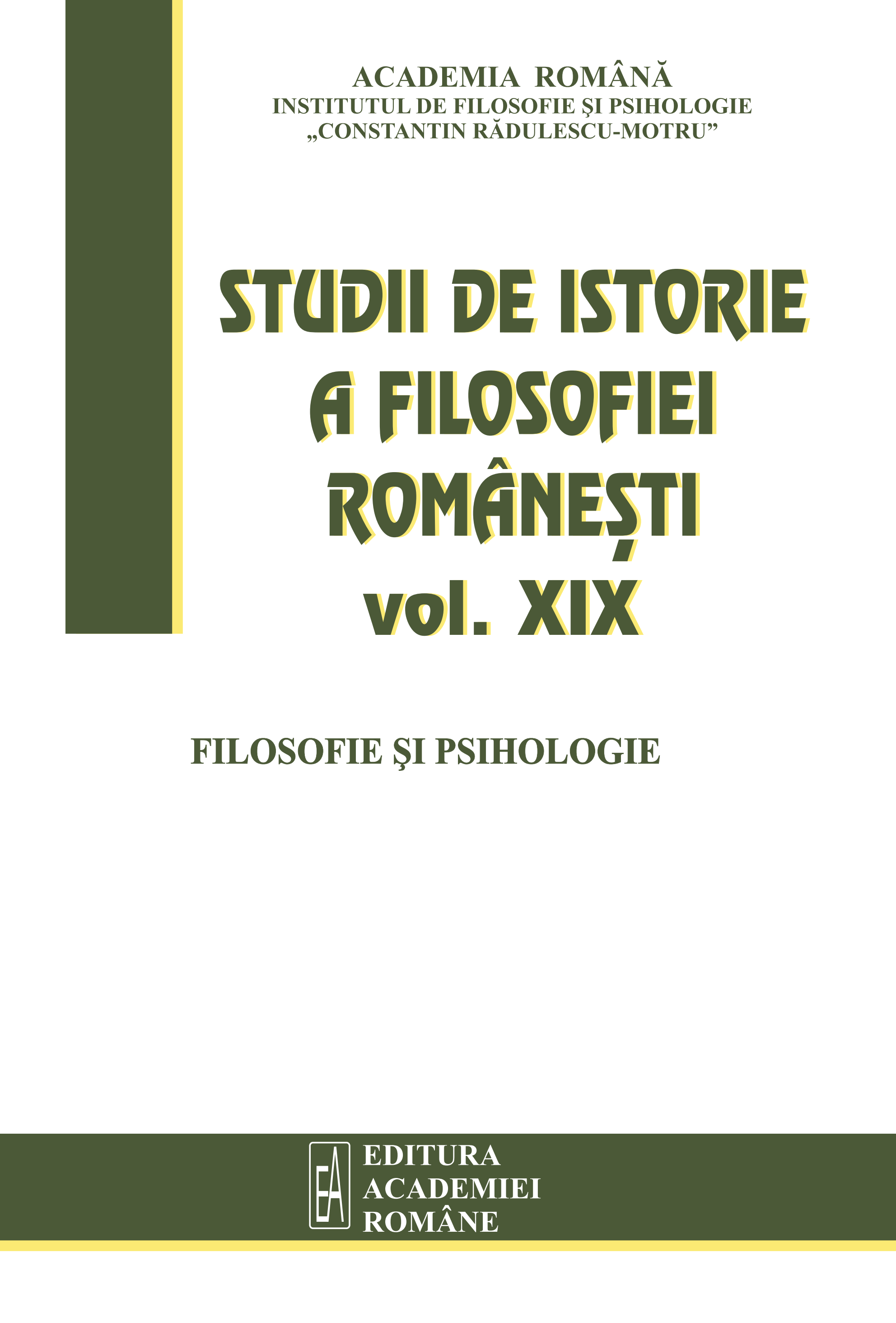O moștenire a lui Edmund Husserl: fenomenologia non-simbolică
An inheritance from Edmund Husserl: Non-symbolic phenomenology
Author(s): Ionuţ-Constantin IsacSubject(s): History of Philosophy, Contemporary Philosophy, Phenomenology
Published by: Editura Academiei Române
Keywords: consciousness; identity; non-symbolic phenomenology; pre reflexivity, creative activity;
Summary/Abstract: Husserl’s posterity has reconsidered the phenomenological topic, exploring directions and consequences barely outlined by its founder. Scholars such as E. Straus, M. Mer-leau-Ponty, H. Maldiney, J. Garelli, M. Richir, and others reshaped Husserl’s genuine phenomenology by giving up the Husserlian ideal of founding phenomenology as a “rigorous science”. Contrary to this, they underscored in their writings a new layer of reality: that of an “archaic” world preceding the symbolic one (in the sense of Husserl and Lacan). E. Straus made his debut with the pioneering work "Du sens des sens" (1935), where he advanced the project of a phenomenological psychology and introduced a distinction between symbolic and non-symbolic phenomenology. This research direction would be established by M. Richir, whose writings marked a significant “turn” in contemporary phenomenology. The present paper delves into the coordinates of this new line of thinking, wherein pre-ontologic or pre-reflexive essences show themselves as having a higher degree of freedom compared to classic predicative ones (as seen, for instance, in the venerable tradition from Plato to Hegel). Especially through a rethinking of Kant’s criticism, non-symbolic phenomenology advances the phenomenological unconscious with its exceptional creative spontaneity, materialized, for instance, in works of art. As the creative activity of the phenomenological unconscious emerges to pave the way towards the new, not only in art, we take the opportunity to highlight the professional and noteworthy contributions of some young Romanian academics. In the end, we conclude by offering critical remarks on several unclear aspects revealed by the problematic meeting point between the symbolic and the phenomenological, aspects that previous exegetes have overlooked until now.
Journal: Studii de istorie a filosofiei româneşti
- Issue Year: XIX/2023
- Issue No: 19
- Page Range: 26-43
- Page Count: 18
- Language: Romanian

